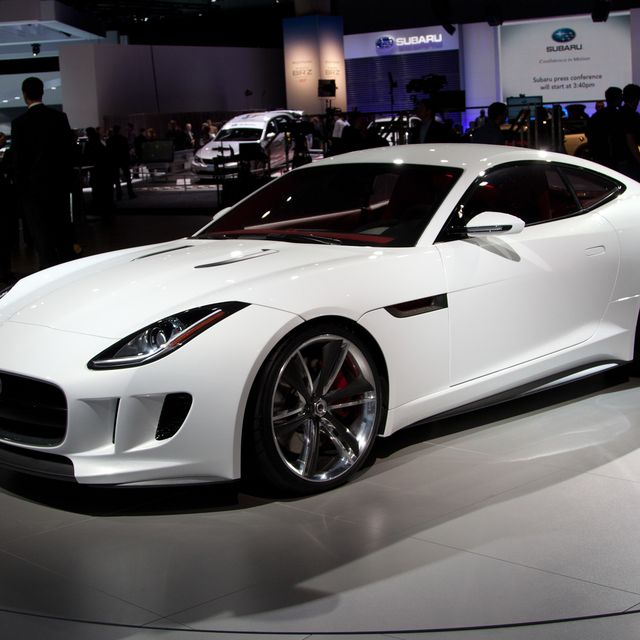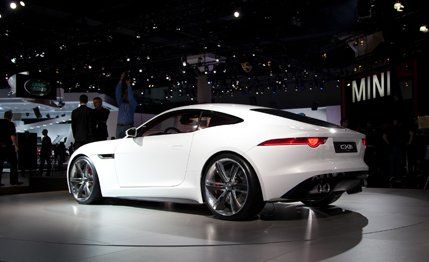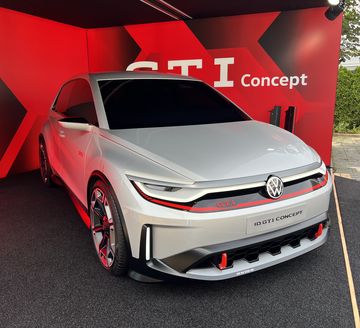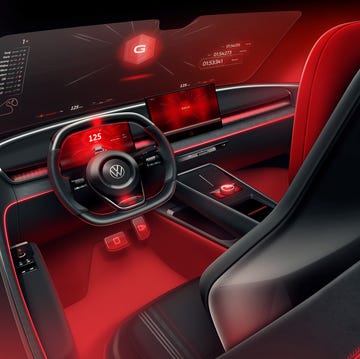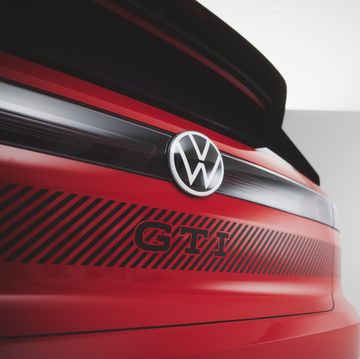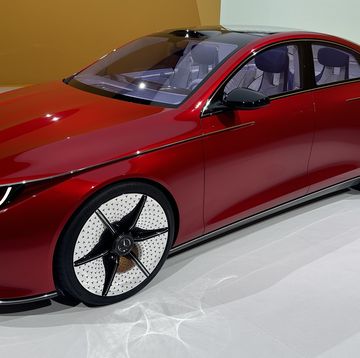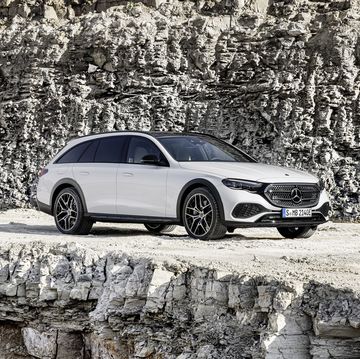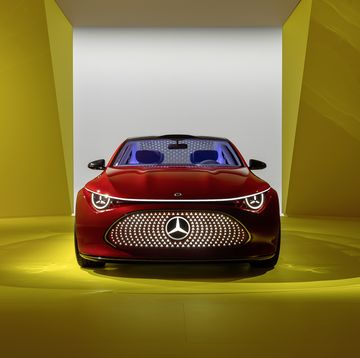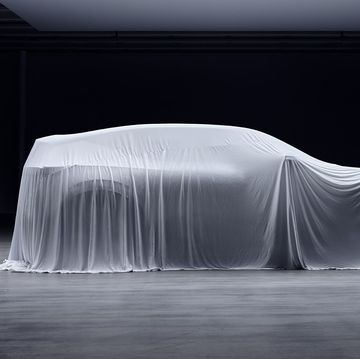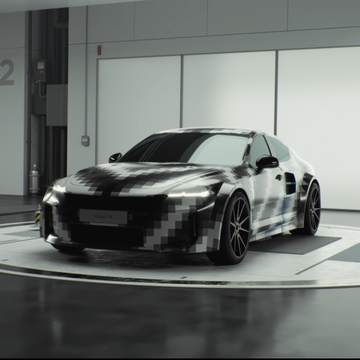In the rankings of prolonged automotive rumors, Jaguar’s introduction of an entry-level sports car is bested only by Alfa Romeo’s alleged return to the U.S.. With the C-X16 concept debuting at the Frankfurt auto show, though, the British company is signaling that yes, a relatively affordable sports car is coming. In real life. Our spy shooters have caught prototypes of what we believe will be called the XE, but what we couldn’t see is beneath the skin. The two-seat concept shows off a new V-6, a hybrid system, and cutting-edge OLED displays—important tech that Jaguar needs if it’s going to redefine its stuffy, cigar-room image.
Power and Styling by AC/DC
When AC/DC’s 16th album, Black Ice, launched in 2009, singer Brian Johnson was quoted as saying “Someone said to Angus the other day, ‘Hey, you've made the same album 15 times.’ Angus said, ‘No, man, we've made the same album 16 times!’” The same enthusiasm for repeating success might be ascribed to Jaguar’s designer, Ian Callum, who could lovingly be accused of designing the same car a few times. Like the Aston Martin Vanquish and DB9 and the Jaguar XK, the C-X16 is designed around classic grand-tourer proportions, with a long hood and short rear deck. The cockpit is low slung, while swept-back headlights sit atop a gaping grille up front, and curvaceous rear haunches lead to gun-slit taillights. The fenders even have horizontal vents, as does the face-lifted XF. (When Jaguar was under the Ford umbrella, this particular Callum styling element was reserved exclusively for Aston Martin.) Suffice it to say, the C-X16 breaks little new ground stylistically. And we’re fine with that.
Being a show car, the C-X16 has been tarted up with a body kit reminiscent of what you’ll find on the company’s high-performance XKR-S. This includes 21-inch rims with carbon-fiber inlays, a carbon-fiber front splitter, a carbon-fiber “Venturi-effect” tail, and carbon-fiber side sills.
What’s new here is under the aluminum bodywork. Jaguar is in desperate need of a new V-6—the Ford Duratec–based boat anchor was dropped from the U.S. but soldiers on in Europe—and the C-X16 showcases a mill that will land in the XF and European XJs soon. (You may remember reading about this engine in our scoop back in April.) The 3.0-liter V-6 here is derived from the charming, powerful 5.0-liter V-8 currently propelling most of the Jaguar and Land Rover lineups. In this application, the six is direct-injected and supercharged to make 375 hp and 332 lb-ft of torque. Considering that’s nearly the same number of horses as are made by the Jag’s naturally aspirated V-8, we don’t think the blown version of the six will see production. If it does, it’ll be detuned somewhat.
Supplementing the gasoline engine is a hybrid system—slightly less exciting than the turbine range extender in Jaguar’s C-X75 concept from last year, we admit—that features an electric motor with a “push-to-pass” function. The latter, the company says, is inspired by the KERS hybrid systems used in Formula 1. The electric motor can add power for up to 10 seconds at a time, adding 94 hp and 173 lb-ft of torque by way of a button on the steering wheel. Power is drawn from a 1.6-kilowatt-hour lithium-ion battery pack mounted behind the seats. The electric motor itself is packaged with a ZF-sourced eight-speed automatic transmission.
An Interior Fit for a Tech Geek?
Unlike the C-X16’s predictable exterior, the passenger compartment brings a number of pleasant surprises. To begin, the gauges appear to be actual gauges. We don’t care much for the way the new XJ’s digital computer screen tries to simulate physical dials—especially the faux reflections—so it’s a delight to see the real deal here. The C-X16 also makes use of rotary knobs to control the HVAC system, which would be a welcome departure from the maddening touchscreen-driven system in Jag’s current models. In the C-X16’s case, the knobs host small OLED (that’s organic light-emitting diode) screens, which change what they display based on what the knobs are set to control. Perhaps most exciting to the gadget freaks among us is the “Connect and View” system. Jaguar says that the system can mirror the screen of almost any smartphone on the car’s center-console-mounted display, and occupants can interact with it mostly as they would their phones. The technology to mirror the phone’s screen should be relatively easy to implement, but making sure the car’s screen can also read inputs the same way as the phone would may be a difficult task. We’re eager to see if Jaguar and its suppliers can deliver on this promise.
Otherwise, the C-X16’s interior is outfitted as you’d expect for a concept car. Leather and Alcantara are draped over virtually every surface, while fixtures are done up in aluminum and carbon fiber. We’ve got nothing against carbon fiber and cow hides, of course—but the promises of a new, more-affordable two-seat sports car, a modern V-6, and top-tier telematics draw our attention elsewhere. We might even be distracted enough to forget that Ian Callum has penned this design once or twice before.
